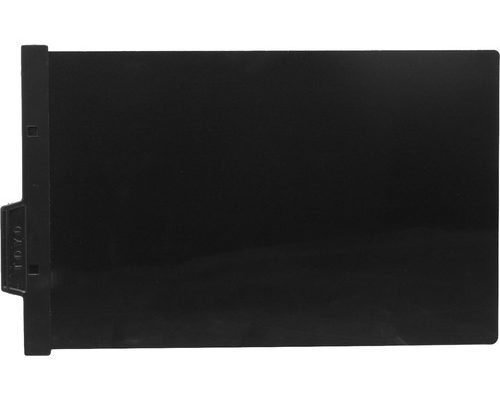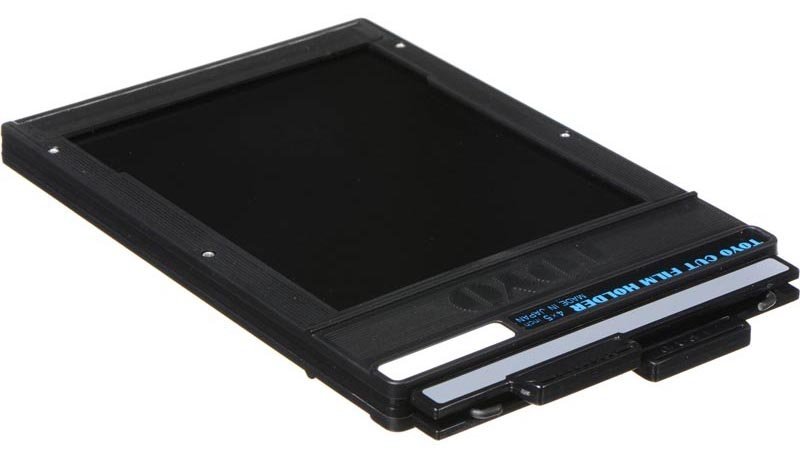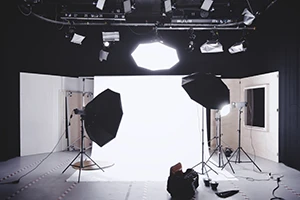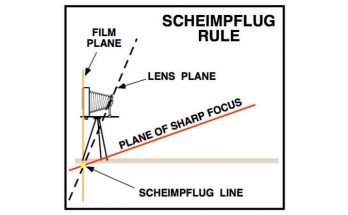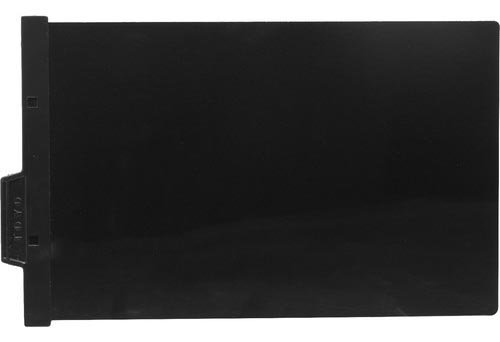
What is a dark slide?
A dark slide is a removable plate used to cover light sensitive material (film or plate) that is loaded into a film holder or magazine for a camera. The dark slide prevents unintended exposure while the film holder or magazine is not attached to the camera.
Dark slides can be made from metal, wood, plastic or composites. Dark slides can also be found on some medium format digital backs, where they serve as means to protect the imaging sensor while the back is off the camera.
How is a dark slide used?
Dark slides are used in different ways depending on the camera system. Currently, the two main camera systems where you can find dark slides are large format and medium format cameras. Both systems utilize dark slides, as both feature detachable film storage modules.
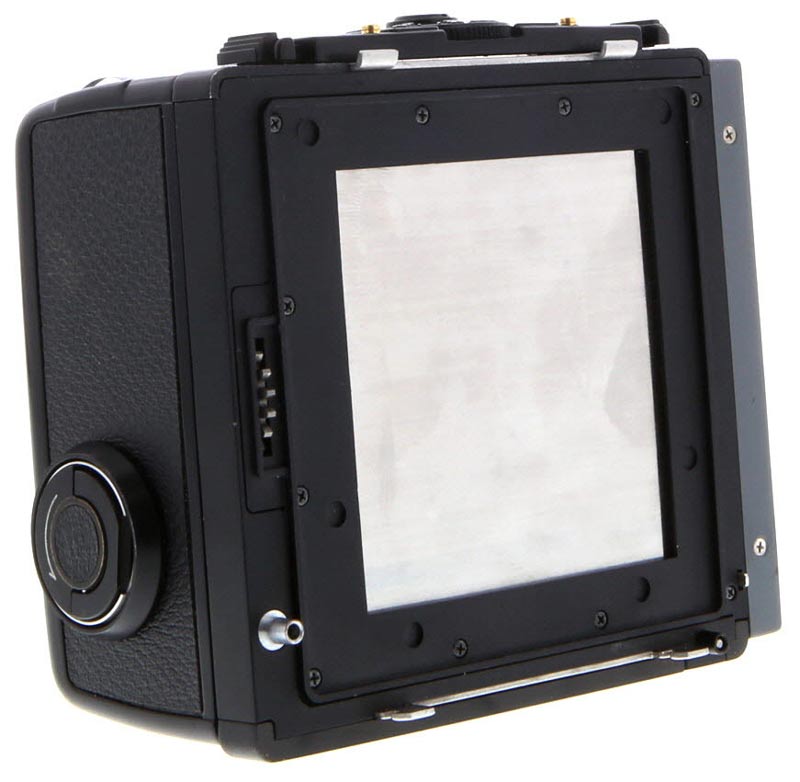
Medium format dark slides
In medium format dark slides can be mostly found in single lens reflex (SLR) type cameras. These cameras generally have a detachable roll film casette (also called backs or magazines) like the Bronica unit pictured above. This design enables the user to switch between different film stocks and/or aspect ratios mid-roll. For example, you can have one magazine loaded with black and white film, another with color, and switch between those every couple of shots. Going a step further, some companies like Mamiya and Hasseblad currently use this mechanism to allow a user to switch between a film and digital capture on the same body. Compared to 35mm cameras, where you generally have to finish a whole roll of film before switching to another, this gives medium format cameras a lot of flexibility.
Dark slides are the key component that enables this process. The dark slide is actually a part of the magazine rather than the camera itself. In the picture of the Bronica back above you can see the polished metal darkslide through the film gate with its gray plastic pull tab on the right. Any time you want to remove a loaded film magazine from the camera, you need to put in the dark slide first. Many cameras have mechanisms in place to prevent the separation of the camera and back if the dark slide is not in place. Simultaneously, most of these cameras will also not allow you to release the shutter if the dark slide is in the magazine, thus preventing accidental blank shots.
If you only have one back for your camera, you can usually load and unload film without removing the back from the camera body. In this case, you do not need to put the darkslide in, as you only ever open the back when a roll of film is already finished and wrapped up in its backing paper. This means that sometimes you might not need the dark slide for months, and it can easily be displaced. Thats why some manufacturers like Mamiya and Hasselblad provide convenient slots into which the dark slide can be stowed when not in use. There are also aftermarket dark slide keeper accessories for cameras or film backs that do not have this feature built in.
Large format dark slides
Dark slides in large format photography get a bit more excercise than their medium format brethen. Unless a roll film back is used, large format cameras shoot on pre-cut sheet film that is loaded in film holders. The typical large format film holder is a flat, plastic casette like the Toyo-View 4×5 film holder pictured above. It is double sided, allowing for two sheets of film to be loaded simultaneously. Each of those two sheets resides behind a dark slide. The dark slide is visible in the picture above, the dark plate in the film aperture of the holder is the slide itself. On the bottom you can see the plastic pull tab and the wire locks that are rotated to prevent accidental removal of the dark slide.
As opposed to medium format dark slides, which can stay off the magazine between shots and even when reloading, in large format the dark slides stay on the holders at all times except for loading and the actual exposure.
Which side out?
Apart from the main function of shading the film, dark slides have another important role in the large format photography workflow. You will notice in the picture above that just above the pull tabs of the dark slide there is a light (gray or white) strip. On the reverse side of the slide this area is black. When the dark slide is inserted into the film holder, it can be rotated so that either the white or black side of the strip is out. In addition, the white side has little raised dots on the pull tab to help differentiate it from the black side in the dark.
This serves no technical purpose, but is very important workflow element, as it is used as a way to differentiate between exposed and unexposed film. Each photographer has different approach to working out which side means what. Predominant logic seems to be that white means unexposed, while black stands for exposed. In practice, it means that when you load unexposed film in the film holder, you insert the dark slide with the gray/white side out. You then proceed to place the holder into the camera, pull the dark slide and expose an image. Many photographers use the dark slide as a handheld shade for the lens when shooting in the sun. Now, when you put the dark slide back into the holder, you rotate it so that the black strip is out (i.e. facing the lens). This way, you know that the film on this side of the holder has been exposed, so that you don’t accidentaly expose it again.
It really does not matter which way you decide to assign the sides, but it is imperative that you are consistent. It you are sharing equipment with other photographers, it’s important to establish which is which in advance. This is also important to communicate if you are having your film processed by somebody else and you are handing it in inside the holders. It might be useful to write exposed in black sharpie on the white strip to eliminate errors.
Empty or full?
Another thing you need to decisde is how to mark empty versus loaded holders. It’s always best to keep empty and loaded film holders separate, but it’s still good to be consistent with dark slide orientation. Common wisdom is to put dark slides with black strip out in empty holders. This way, even if you forget whether there is film inside, you will most likely go into a darkroom to check. If you leave the white side out, you might think there is fresh film inside and go shooting. There is nothing worse than going into the darkroom to process some awesome shots only to find you’ve been shooting with empty holders.

